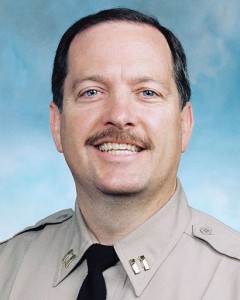Relationships+Technology (Social Media) to Prevent Violence
Relationships and technology are the key to community safety. The importance of #WeDay is something we all must understand!
 Twitter hash tags are very useful tools for police, school boards, media outlets, parents and students for dealing with fast moving emergency management scenarios. This post will provide insight into the use of Twitter hash tags by police and partner agencies in two 2010 gun related calls in and around Toronto schools as well as a missing mentally challenged person case during extreme cold temperatures in downtown Toronto.
Twitter hash tags are very useful tools for police, school boards, media outlets, parents and students for dealing with fast moving emergency management scenarios. This post will provide insight into the use of Twitter hash tags by police and partner agencies in two 2010 gun related calls in and around Toronto schools as well as a missing mentally challenged person case during extreme cold temperatures in downtown Toronto.
What is a ‘hash tag’? “A hash tag is simply a way for people to search for tweets that have a common topic. It is a word within the 140 characters allowed in a tweet that has a # prefix. (The # is a hash symbol, hence the term hash tag or hashtag.) source article on “The Twitter Hash Tag: What Is It?”
In the fall of 2010, the Toronto Police Service Corporate Communications team worked in partnership with the Toronto District School Board Communications Team, and used Twitter hash tags to effectively communicate with the community , emergency management partners and the media to manage the situations effectively.
Something very important in this story is a commentary at the end of the post, provided by TJ Goertz, the Toronto District School Board Communications employee who was working @TDSB_Official twitter accounts for both of these scenarios. Working in multidisciplinary collaboration for effective emergency management is the key to success. It all happens very fast, and the more comfortable you are as a police communications person with all the agencies and their functions around you during an emergency, the more effective you will do your job.
Sometimes when I write or try to explain the effectiveness of social media applications to people, especially fellow police officers and civilian managers.. I often get told “get to the facts” .. If you stop reading now.. you have the facts.. and the moral of the story.. “Using Twitter and hash tags for emergency management works.”
If you are the hands on person who will be in charge of using social media, in particular-Twitter- and want to know how to do that effectively using relationships and technology …. patience is a virtue.. read on.
If you are a police, school board or media manager type, and don’t have time to read on, or simply don’t want to, here is what I would do if I were you: Invest funding and human resources in training and staffing for effective use of social media for your agency immediately, and initiate corporate partnership strategies with your partner agencies integrated and linked in social media.
#WeDay turned into #CTGun day for my partner and I on a school day in Toronto a month into the 2010 school year when a shot was fired in a large downtown Toronto high school just after the noon hour.
About a month later, a day of social media policy making meetings at Toronto Police Service headquarters turned into action when the Toronto District School Board Communications Team contacted the Toronto Police Communications team about another gun call that indirectly was effecting two of their schools. The hash tag #54Gun was used.
On both occasions the situation involved many people asking for information about an emerging community safety situation all at the same time. How can you effectively handle these situations using modern day technology? It is simple..
- have an everyday presence and following on Twitter and Facebook
- create or start tweeting official information using a new or already created hash tag immediately about the emergency incident as soon as it comes to your attention
- engage contact in person or on the phone with the police and school board persons in charge of the incident, as well as your local media personalities.
Relationships and technology strategy over the past five years could never have been more important than at these moments that I am about to describe for you.
Incident #1

Toronto cop Tony Vella has worked in the media office at police headquarters for a number of years. I became his colleague in the office in April, 2010 when the position of “Social Media Officer” was added to the “Corp Comm” team by the officer in charge, Deputy Chief Peter Sloly.
There have been growing pains for social media implementation into the daily business of the Toronto Police Service Corporate Communications office for sure, but never between Tony and I. Tony is new to Twitter and Facebook and I am new to the day to day grind of the traditional media and cop relations, although not totally new.. due to all the work I had the honour to do with the Toronto Crime Stoppers program prior to joining the Corp Comm team.
September 30, 2010 started off like any other at 8am when I arrived in the downtown core by GO Train to Union station. Several students were in the station that day from all across Toronto, and all across Ontario, as they were arriving to attend “We Day” at the Air Canada Centre (the home of the Toronto Maple Leafs hockey team and Toronto Raptors basketball team). This was a day to build community and trust with the kids in a theme of community building and featured performances and speeches from great names like @CraigKielburger of Free The Children and now famous Canadain rapper K’Naan “Like A Waving Flag’ song fame (http://Twitter.com/IAMKNAAN )
The good thing about the We Day celebration in my mind was that it was going to be live streamed on Facebook .. and it was an opportunity similar to when Barack Obama was sworn in for the world to particpate in dialogue on the Facebook feed.
My focus that day became to log into the live feed at http://WeDay.com to join the conversation using my official Toronto Police Social Media Facebook profile. I decided that I might be better accepted in the crowd as my original Crime Stoppers Facebook Profile which is http://Facebook.com/ScotMills (http://Twitter.com/GraffitiBMXCop).
I proceeded to log in to the concert and watch it live, and participate in the dialogue both tweeting and using facebook. Some of the comments I was getting from others who were doing the same (students both in the audience and following the stream around the world) were posts like “Wow, there is a cop on facebook”. It was an interesting dialogue to say the least.
During all of this, our office received a call that a gun shot had been fired in Central Technical high school on Bathurst St. My supervisor, Meaghan Gray, Director of Issues Management at Toronto Police Service Corporate Communications gave the order to attend the scene and use social media officially for Toronto Police Service as best as we can.
Constable Vella (http://Twitter.com/OfficerVella) and I quickly changed into our full police uniforms, and drove an unmarked police car to the scene. Tony drove and I tweeted on my blackberry. It should be noted that I brought a power inverter with me, as I anticipated a potentially long situation where power to my blackberry could become an issue.
I immediately created the Hash Tag #CTGun. The incident commanders from 14 Division had already designated a staging area for the media at the southeast corner of the school on Harbord Street at Borden Street. I updated the media using Twitter that @OfficerVella would be the media spokesperson for the incident and that we would be updating from the scene with using hash tag #ctgun.
I also tweeted a few times using my @GraffitiBMXCop twitter account into #WeDay hash tag stating that there was a school shooting at Central Tech and to follow #CTGun. I also advised that I was switching over to the @TorontoPolice account for official updates. Within 15 minutes #ctgun was a trending topic in Toronto. We had accomplished our community safety communications goals of emergency management. A spin off possibility is that the potential for suspect information being called in to the police or ‘tweeted or facebooked’ to the police increases because of the improved communications. Exact telephone numbers and e-mail addresses of the investigating officers were posted into social media, as well as how to anonymously submit a tip to Crime Stoppers (Talk; 1-800-222–TIPS (8477) Type: http://222tips.com or Text TOR plus your message to CRIMES (274637) or “Leave A Tip” Tab on Facebook Pages.
The geographic demographic of the over 2000 students at the school are from all over Toronto. Effectively, any student who was following #WeDay hash tag was now made aware of the #ctgun incident, and if they were interested in the event for any reason, whether it be curiosity or they had pertinent information they needed to communicate with the police, they could now follow the official updates on the incident using #ctgun. In the age of most youth having a smartphone in their possession, and using social media, this becomes a quicky and effective means of communication with a large group of people who may have information in a timely fashion.
One challenge to using Twitter, is who is your ‘target audience’. For the most part, the traditional media, as well as activists and interested persons are following the @TorontoPolice twitter account. The youth of Toronto use Facebook. The good part about using Twitter is the feed is linked into the Toronto Police Facebook page.. so the updates are going right into a medium that the students are used to. All they have to do is know that this official update information is coming to the Toronto Police Facebook page and hit the ‘LIKE’ button on the page to get the feeds. The hope is that the students will not ‘Unlike’ the page after the incident, and become part of the community safety dialogue that is ongoing on Facebook and Twitter on a regular basis, and not just for an ‘incident’.
I met Detective Sergeant Ian McArthur of 14 Division at the scene. He was the hands on person who communicated official source information to me that I was putting out into the twitter feed. The result was that we were able to broadcast that all the students were safe on twitter and facebook, which was immediately re-broadcasted by all the major traditional media outlets in Toronto, effectively advising parents that their children were safe.
At the scene I was able to dialogue with the Toronto District School Board staff, who were dealing with nearby elementary schools in a ‘hold and secure’ situation (one step below a full lockdown’). The @TorontoPolice twitter feed became the lead source of official, up to date and accurate information on what was happening, what suspects the police were looking for, and that the other students were safe. There was no panic from the students on the inside involved in the lockdown, or from the minimal number of parents who attended the scene, as the information of safety had already been mass broadcasted, and there was no need for worry or panic.
Incident #2
 Communication using twitter hash tags became an important, timely and very effective means of communication once again when a high school student on her way to school on a Toronto city bus text messaged her mother saying that she overheard some youth on the bus saying they had a gun, then heard the gun cock. Her mother called 911 and before long police had two suspects in custody, one school in “lockdown” and another in “hold and secure” .. and I was busy communicating with the Toronto District School Board, the media and public using hash tag #54Gun.
Communication using twitter hash tags became an important, timely and very effective means of communication once again when a high school student on her way to school on a Toronto city bus text messaged her mother saying that she overheard some youth on the bus saying they had a gun, then heard the gun cock. Her mother called 911 and before long police had two suspects in custody, one school in “lockdown” and another in “hold and secure” .. and I was busy communicating with the Toronto District School Board, the media and public using hash tag #54Gun.
One tactical error made on this one, which is a ‘lessons learned’ going forward is that I started the hash tag #EYGun without checking if the tag existed for another topic first. Turned out that that hash tag was being used in another language on twitter. Once this was realized (thanks to the heads up work by @Lawscomm ) we immediately switched the hash tag to #54Gun which stood for the police division area that the incident was occuring in. This incident successfully concluded with the apprehension of a suspect, but the gun was not recovered by police. The media put the information out very quickly, and the official source was all taken over the phone by media relations officer @OfficerVella
Incident #3
Like stated at the outset… explaining how using hash tags on twitter works as a timely and effective means of communication works takes time… It is interesting to note what Detective Sergeant Ian McArthur stated during a discussion I had with him recently about the use of hash tags. He stated that he still didn’t fully understand how social media worked, but knew for sure that it was a helpful tool in the Central Tech case and he reminded me of a missing person case that we effectively used social media for earlier in the year.
It was this discussion with this ace investigator, as well as a meeting with the management team at 14 Division between our Toronto Police Service Social Media Working Group member Sergeant Tim Burrows, myself and the management team of 14 Division led by Superintendent Ruth White, that truly made me realize the need for information on this topic to be published, understood and acted upon in policing agencies around the world.
Det McArthur reminded me about a missing 37 year old female named Lily Dong who had the mental capacity of a child and went missing without a coat in freezing temperatures on January 11, 2010 in the Dupont St and Dufferin Ave area of Toronto. A full level 3 search was set up, complete with a command post at the Wallace Emerson Community Centre. This is the highest level of search in Toronto Police policy.
There was considerable community concern and media attention to this case due to the freezing temperatures and the mental capacity of the missing woman. We immediately started tweeting about the case. Within minutes, Toronto Mayor David Miller @IamDavidMiller was re-tweeting our appeal for information to his thousands of twitter followers. The police ended up receiving a call from a citizen spotting the missing woman on Lakeshore Bv, about 10km away from where she went missing. She was located safety and returned to her family.
It is difficult to say if social media was the reason this missing person was found, but it surely helped, as stated below by Det McArthur: “I would suggest that this is an excellent example of how quickly social media assists law enforcement in timely awareness of local community issues. Again, I can’t say for certain that social media was the sole source for locating this missing woman, it certainly helped in creating awareness and bringing this to a successful conclusion.”
What follows is a message from Mr. T.J. Goertz of the Toronto District School Board:

T.J. Goertz
Using Hashtags and Twitter During School Lockdowns
The TDSB Perspective
By T.J. Goertz, Communications Coordinator, Toronto District School Board
We’ve been using Twitter to communicate with TDSB parents, media and the wider community since the beginning of the 2009-10 school year. In September 2010, we actively began using Twitter hashtags, in cooperation with Toronto Police Services, during school lockdown and hold and secure situations.
Our first major incident was a shooting at Central Technical School in late September. I spoke with Constable Scott Mills early in the investigation to confirm details and we then tweeted frequent updates using the #ctgun hashtag. We also used specific hashtags during later incidents at East York C.I. and Riverdale C.I.
We’ve found Twitter to be extremely useful in updating both the media and local communities as quickly and effectively as possible. For example, during the Central Tech incident, the National Post quoted directly from a tweet we published in an online news story. We also received positive feedback and a “thank you” from a tweeting parent who was concerned for her son’s safety at Riverdale.
By working with the police and the local school, using social media, we are providing one more way for parents and guardians to get the information they need, as soon as it’s available.
~T.J. Goertz
Conclusion from Constable Mills:
I guess being the author of the blog post, one reserves the right for the last comment… please revisit the first words of this post Relationships and technology are the key to community safety. The importance of #WeDay is something we all must understand!
. In Toronto we have come a long way with relationships between professionals in a multi-disciplinary manner within our agencies. We still face a number of challenges, not unlike any other major urban centre. The reality of the Central Tech school shooting.. is that the police didn’t recover the gun used in the shooting, just the shell casing. Despite intensive police and school board investigation, no evidence to indicate who had the gun or fired the shot was uncovered. In the #54Gun incident, the suspect was arrested, but the gun was never recovered.
The importance of #WeDay is something we all must understand.
 It will not have escaped your attention that the country is experiencing some financial turmoil at present. The news in the last 24 hours has been dominated by a claim that 10,000 police officers will be lost over the coming year. I have no idea if these numbers are true (I’m not sure anybody knows yet), but it is safe to say that in years to come there will be less police officers, less fire officers, less local authority employees , in fact less of lots of people employed to look after us.
It will not have escaped your attention that the country is experiencing some financial turmoil at present. The news in the last 24 hours has been dominated by a claim that 10,000 police officers will be lost over the coming year. I have no idea if these numbers are true (I’m not sure anybody knows yet), but it is safe to say that in years to come there will be less police officers, less fire officers, less local authority employees , in fact less of lots of people employed to look after us.












